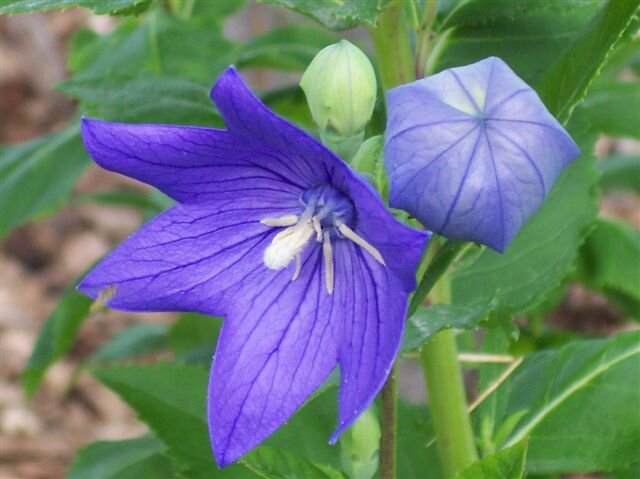Description
Key Features:
Size & Growth: The Balloon Flower typically grows to a height of 12 to 18 inches with a spread of 12 to 15 inches. Its compact, clump-forming growth habit makes it an excellent choice for adding color and texture to garden beds and borders, as well as for use in containers.
Foliage: Features attractive, ovate to lance-shaped leaves that are green and provide a lush backdrop for the plant’s blooms. The foliage remains healthy and vibrant throughout the growing season.
Flowers: Produces large, balloon-shaped buds that open into star-shaped flowers in shades of blue, pink, or white. The blooms are typically 2 to 3 inches in diameter and have a unique, papery texture. Each flower has a striking star-like appearance that adds visual interest to the garden.
Blooming Time: Blooms from mid-summer to early fall, providing a long-lasting display of color and texture. The plant’s vibrant flowers continue to attract attention and add beauty to your garden throughout the growing season.
Disease Resistance: Balloon Flower is generally resistant to common pests and diseases, including aphids and powdery mildew. Its hardy nature makes it a reliable and low-maintenance choice for various growing conditions.
Soil & Light Requirements: Prefers well-drained soil and thrives in full sun to partial shade. It is adaptable to a range of soil types, including sandy, loamy, and clay soils. Providing adequate sunlight and ensuring good drainage helps the plant perform at its best.
Care Instructions: Requires minimal maintenance once established. Regular watering during dry periods helps keep the plant hydrated, but avoid overwatering and ensure good drainage to prevent root rot. Applying mulch around the base of the plant can help retain soil moisture and reduce competition from weeds. Balloon Flower typically does not require pruning, but removing spent flowers can help maintain its appearance and encourage additional blooms.
Uses:
Ornamental: Ideal for adding color, texture, and interest to garden beds, borders, and containers. The Balloon Flower’s unique blooms and attractive foliage make it a standout feature in any garden design.
Container Gardening: Suitable for use in containers and patio gardens, where its compact size and distinctive flowers can enhance the visual appeal of outdoor spaces.
Cut Flowers: The long-lasting blooms make excellent additions to floral arrangements and bouquets, adding a touch of whimsy and elegance to indoor displays.
Planting & Maintenance:
Planting: Choose a location with well-drained soil and appropriate light conditions, either full sun or partial shade. Dig a hole that is twice the width of the root ball and place the plant at the same depth it was growing in the container. Space multiple plants about 12 to 15 inches apart to allow for their mature spread.
Watering: Water thoroughly after planting and keep the soil consistently moist during the growing season. Ensure good drainage to avoid waterlogging. Mulch around the base of the plant to help retain soil moisture and reduce competition from weeds.
Pruning: Balloon Flower typically does not require extensive pruning. Remove spent flowers to maintain the plant’s appearance and encourage additional blooms. In late fall or early spring, cut back any dead or damaged foliage to promote healthy growth.
Add a touch of whimsy and vibrant color to your garden with the Balloon Flower. Its unique blooms, attractive foliage, and easy-care nature make it a delightful addition to any garden or landscape.





